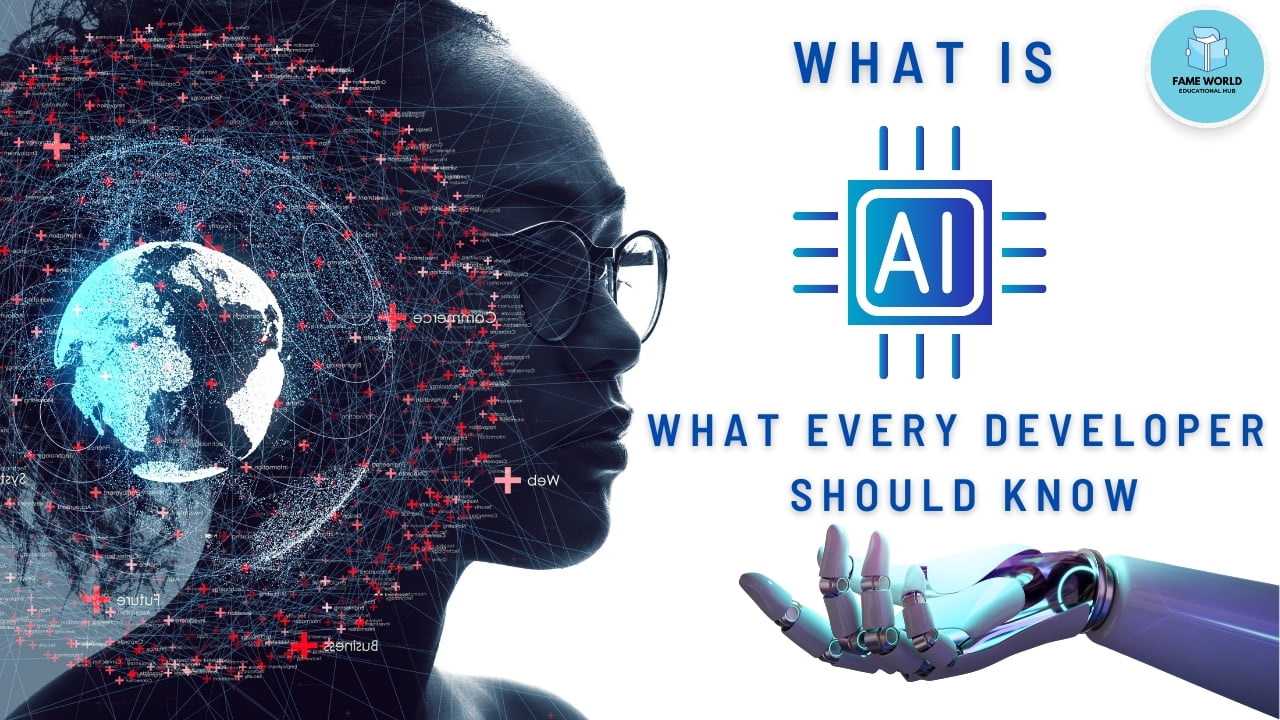Artificial Intelligence (AI) is revolutionizing industries and transforming how we interact with technology. As a developer, understanding AI fundamentals and its practical applications can significantly enhance your skills and career opportunities. This guide will walk you through everything you need to know about AI, from its basics to advanced concepts.
Table of Contents
- Introduction to Artificial Intelligence
- Key Concepts and Terminology
- Types of Artificial Intelligence
- Machine Learning: The Core of AI
- Deep Learning and Neural Networks
- Natural Language Processing (NLP)
- Computer Vision
- AI in Real-World Applications
- Ethical Considerations in AI
- Resources for Learning AI
- Conclusion
1. Introduction to Artificial Intelligence
Artificial Intelligence refers to the simulation of human intelligence in machines that are programmed to think and learn like humans. It encompasses a wide range of technologies and applications aimed at mimicking cognitive functions such as problem-solving, reasoning, learning, perception, and language understanding.
2. Key Concepts and Terminology
AI vs. Machine Learning vs. Deep Learning
- Artificial Intelligence (AI): The broader concept of machines being able to carry out tasks in a way that we would consider “smart.”
- Machine Learning (ML): A subset of AI that allows systems to learn and improve from experience without being explicitly programmed.
- Deep Learning: A subset of machine learning that uses neural networks with many layers (deep neural networks) to learn representations of data.
Supervised vs. Unsupervised Learning
- Supervised Learning: Learning from labeled data with input-output pairs (e.g., classification, regression).
- Unsupervised Learning: Finding patterns and relationships in data without labeled responses (e.g., clustering, association).
3. Types of Artificial Intelligence
Narrow AI vs. General AI
- Narrow AI: AI that is focused on performing specific tasks, such as image recognition or language translation.
- General AI (AGI): AI that exhibits human-like intelligence and can perform any intellectual task that a human can do.
4. Machine Learning: The Core of AI
Basics of Machine Learning
Machine learning algorithms enable computers to learn from data and make decisions or predictions based on that data. Common algorithms include:
- Linear Regression: Predicting a continuous value based on input variables.
- Decision Trees: Hierarchical tree structures to make decisions based on input features.
- Support Vector Machines (SVM): Finding a hyperplane that best divides a dataset into classes.
5. Deep Learning and Neural Networks
Neural Networks
- Artificial Neural Networks (ANN): Basic units (neurons) connected in layers to process information similarly to the human brain.
- Convolutional Neural Networks (CNN): Specialized for processing grid-like data, commonly used in image and video recognition.
- Recurrent Neural Networks (RNN): Designed to recognize patterns in sequences of data, useful for natural language processing and time series prediction.
6. Natural Language Processing (NLP)
Applications of NLP
- Sentiment Analysis: Determining the sentiment (positive, negative, neutral) of a piece of text.
- Named Entity Recognition (NER): Identifying entities such as names, dates, and locations in text.
- Machine Translation: Translating text from one language to another automatically.
7. Computer Vision
Applications of Computer Vision
- Object Detection: Identifying and locating objects within an image or video stream.
- Image Classification: Assigning a label to an image based on its content.
- Facial Recognition: Identifying or verifying a person’s identity from a digital image or video frame.
8. AI in Real-World Applications
Industry Applications
- Healthcare: Diagnostics, personalized treatment plans.
- Finance: Fraud detection, algorithmic trading.
- Transportation: Autonomous vehicles, route optimization.
- Retail: Customer recommendations, supply chain optimization.
9. Ethical Considerations in AI
Ethical Issues
- Bias in Data: AI systems can inherit biases from training data, leading to unfair outcomes.
- Privacy Concerns: Handling and protecting sensitive user data.
- Impact on Jobs: Automation of tasks traditionally performed by humans.
10. Resources for Learning AI
Online Courses and Tutorials
- Coursera: Courses by Andrew Ng on Machine Learning and Deep Learning.
- edX: AI courses from MIT and other top universities.
- Udacity: Nanodegree programs in AI and machine learning.
Books
- “Artificial Intelligence: A Guide for Thinking Humans” by Melanie Mitchell.
- “Deep Learning” by Ian Goodfellow, Yoshua Bengio, and Aaron Courville.
Online Platforms
- Kaggle: Data science competitions and datasets for practice.
- GitHub: Open-source AI projects and repositories.
11. Conclusion
Artificial Intelligence is reshaping industries and creating new possibilities across various domains. As a developer, understanding AI fundamentals and its applications can unlock numerous career opportunities and allow you to contribute to cutting-edge innovations. By exploring the core concepts, techniques, and ethical considerations discussed in this guide, you’re well on your way to mastering AI and leveraging its power to build intelligent solutions.



